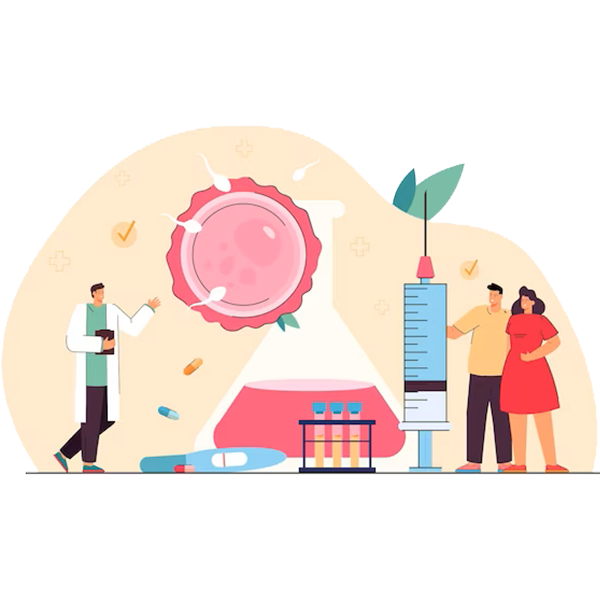


- IVF stands for In Vitro Fertilization, which is a type of assisted reproductive technology (ART) that involves fertilizing an egg with sperm outside of the body in a laboratory setting. The resulting embryos are then transferred to the uterus for implantation.
- The IVF treatment process typically involves several steps:
- Ovarian stimulation: Fertility medications are used to stimulate the ovaries to produce multiple eggs.
- Egg retrieval: Once the eggs have matured, they are retrieved from the ovaries using a transvaginal ultrasound-guided needle.
- Fertilization: The eggs are fertilized with sperm in a laboratory dish, either through traditional IVF or intracytoplasmic sperm injection (ICSI), where a single sperm is injected directly into the egg.
- Embryo culture: The fertilized eggs are cultured in a laboratory for several days, during which time they develop into embryos.
- Embryo transfer:One or more embryos are transferred into the uterus using a catheter, typically about 3-5 days after fertilization.
- Pregnancy test:About two weeks after the embryo transfer, a pregnancy test is performed to determine if the procedure was successful.
- IVF is often recommended for couples who have been trying to conceive for a long time without success, or who have other fertility issues such as blocked fallopian tubes or low sperm count. It can also be used in cases of infertility due to advanced maternal age, endometriosis, or genetic disorders.
- While IVF can be highly effective, it is also a complex and expensive procedure that carries some risks, such as multiple pregnancies and ovarian hyperstimulation syndrome. It is important for patients to discuss the risks and benefits of the treatment with their healthcare provider to determine whether it is the right option for them.

